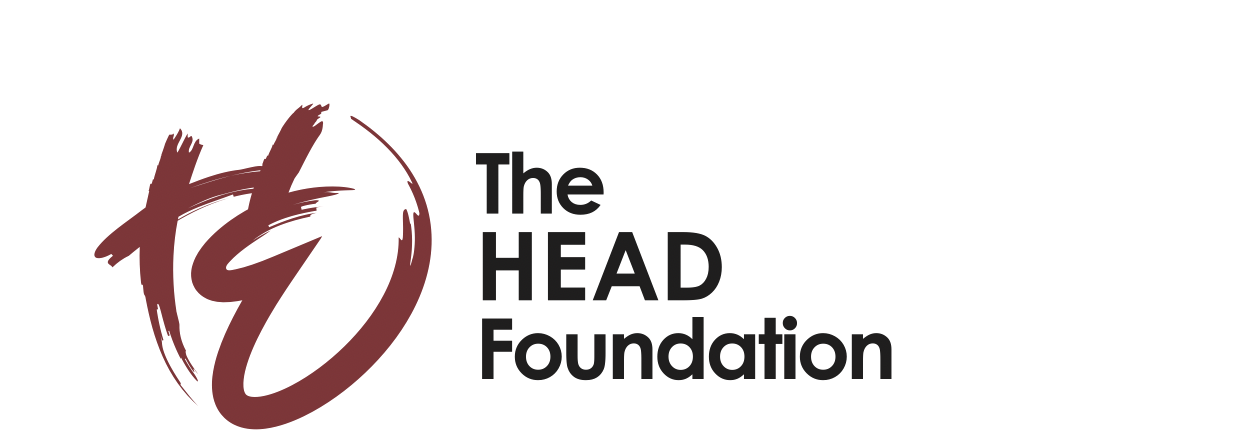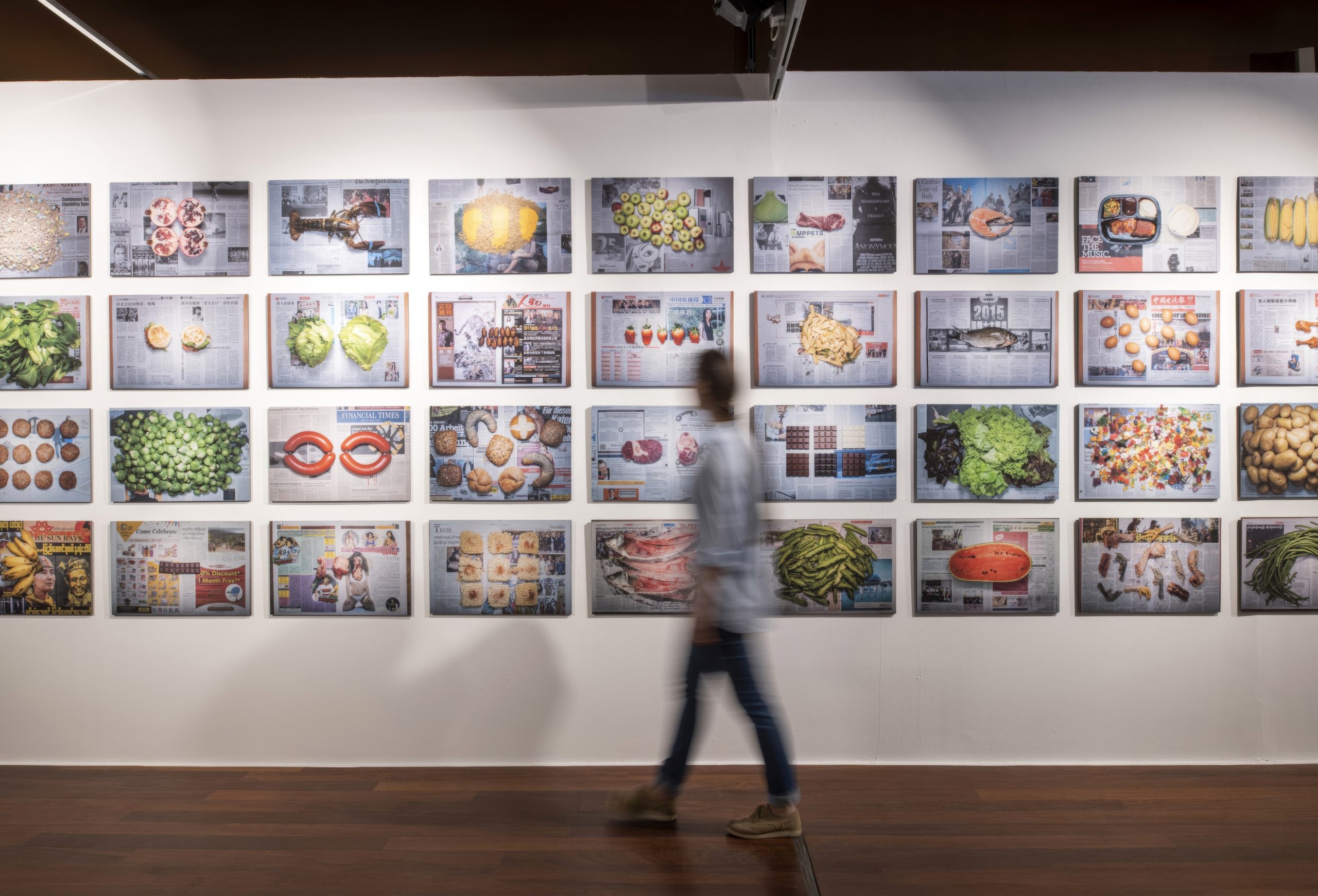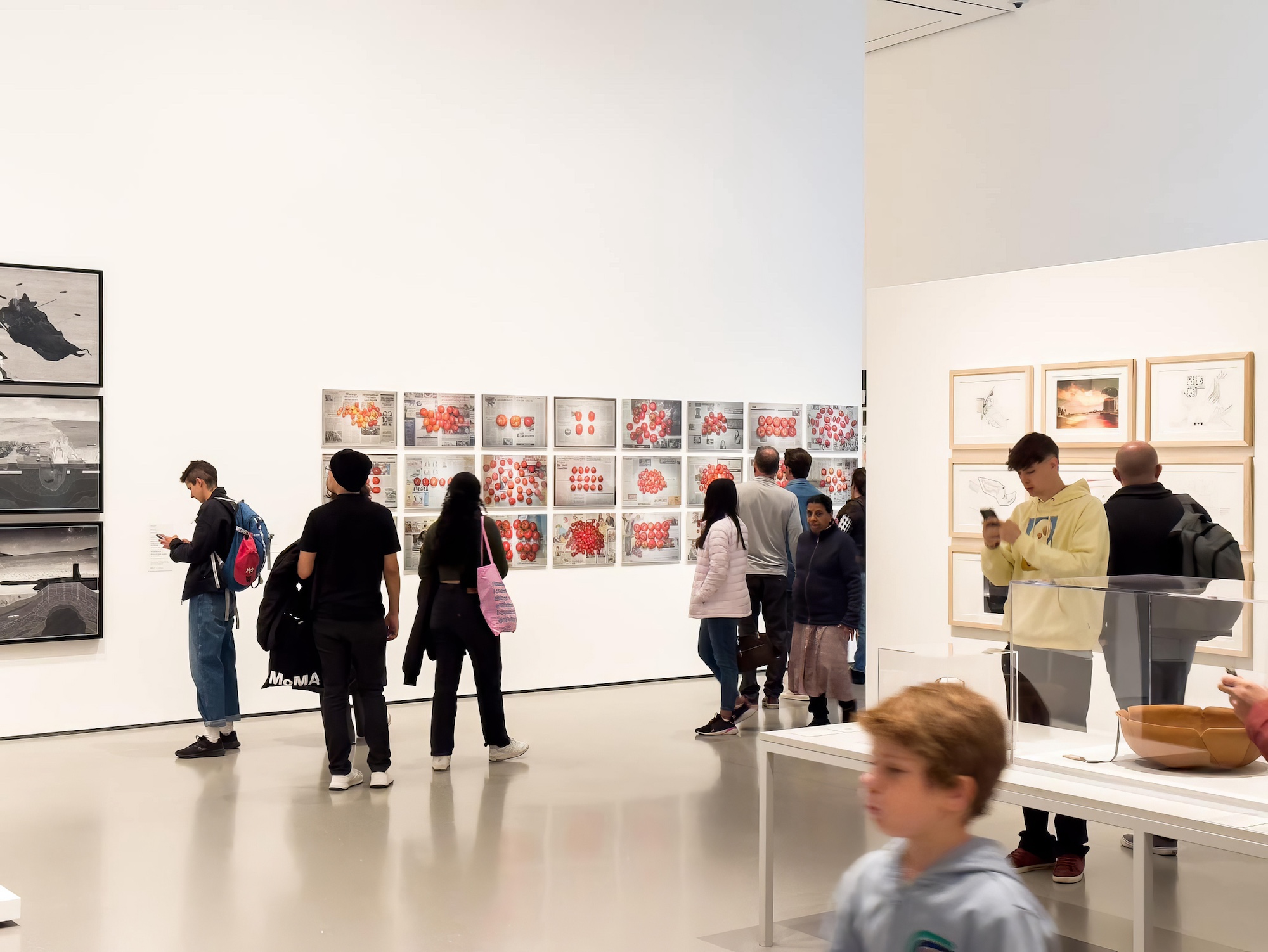What does poverty taste like?
In their contemporary art project, The Poverty Line, artist duo Chow and Lin (Stefen Chow and Huiyi Lin) from Singapore explore this profound question by merging art and data. Since 2010, they’ve travelled more than 200,000 kilometres across 38 countries and territories, documenting what people at the local poverty threshold can afford to eat in a day. Each image features local foods, purchased with a day’s food budget, arranged on newspapers from the region. The project highlights the human side of economic disparity, food security, and the complex interplay between survival, cultural identity and social structures. By examining how poverty is defined and experienced globally, The Poverty Line invites viewers to rethink inequality, one meal at a time.
In 2014, a person living on the poverty line in Dubai, United Arab Emirates had a daily food budget of AED 11.08 (USD 3.02), enough to buy five pomegranates.

Installation view of “The Poverty Line, Outdoor Exhibition,” Landskrona Foto Festival 2022, Landskrona, Sweden.
Photo: Vivian Fung
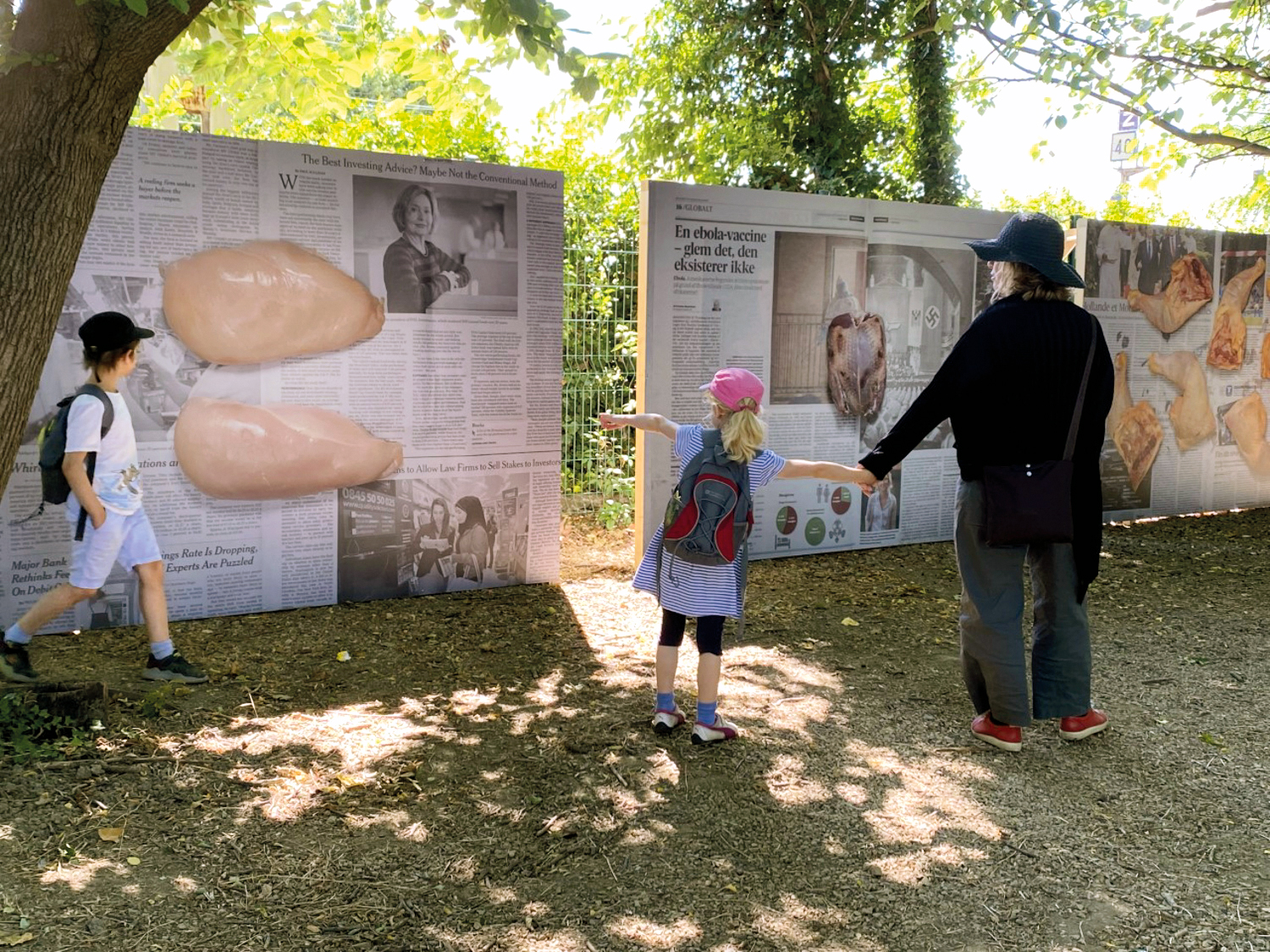
Installation view of “Summer of Fireflies: The Poverty Line Solo Exhibition,” Les Rencontres de la Photographie d'Arles 2021, Arles, France.
Photo: Vivian Fung
Beijing-based husband-and-wife team Chow, an award-winning photojournalist, and Lin, an economist by training and MFA graduate, combined their expertise to create an art project that intertwines visual storytelling with economic data. Their journey was not without challenges. Navigating varying definitions of poverty across different countries, sourcing accurate data, and gaining access to often hidden communities required persistence and adaptability. Yet, their commitment led to a compelling body of work that captures the stark differences in what can be purchased for a day’s food budget across diverse regions. Exhibited at major venues like the United Nations Conference Centre in Bangkok and Arles Les Rencontres De La Photographie, The Poverty Line has sparked critical conversations about economic inequality and food security. It was also acquired by The Museum of Modern Art (MoMA) and the Central Academy of Fine Arts Museum in Beijing, cementing its significance in contemporary art. The work has not only gained recognition in the art world but has also catalysed important discussions on how poverty impacts daily life for billions of people around the world. For Chow and Lin, The Poverty Line is both a personal and professional endeavour. The duo is dedicated to challenging perceptions of poverty, showing that it is not a fixed number but a lived reality that varies greatly depending on geography and culture. The project explores the vital connection between food, survival and dignity, urging viewers to reflect on the global inequalities that persist today. The Poverty Line continues to provoke thought and empathy, deepening awareness of the disparities that shape lives worldwide. ∞

In 2016, a person living on the poverty line in Beijing, China had a daily food budget of CNY 8.22 (USD 1.27), enough to buy five packs of instant noodles.
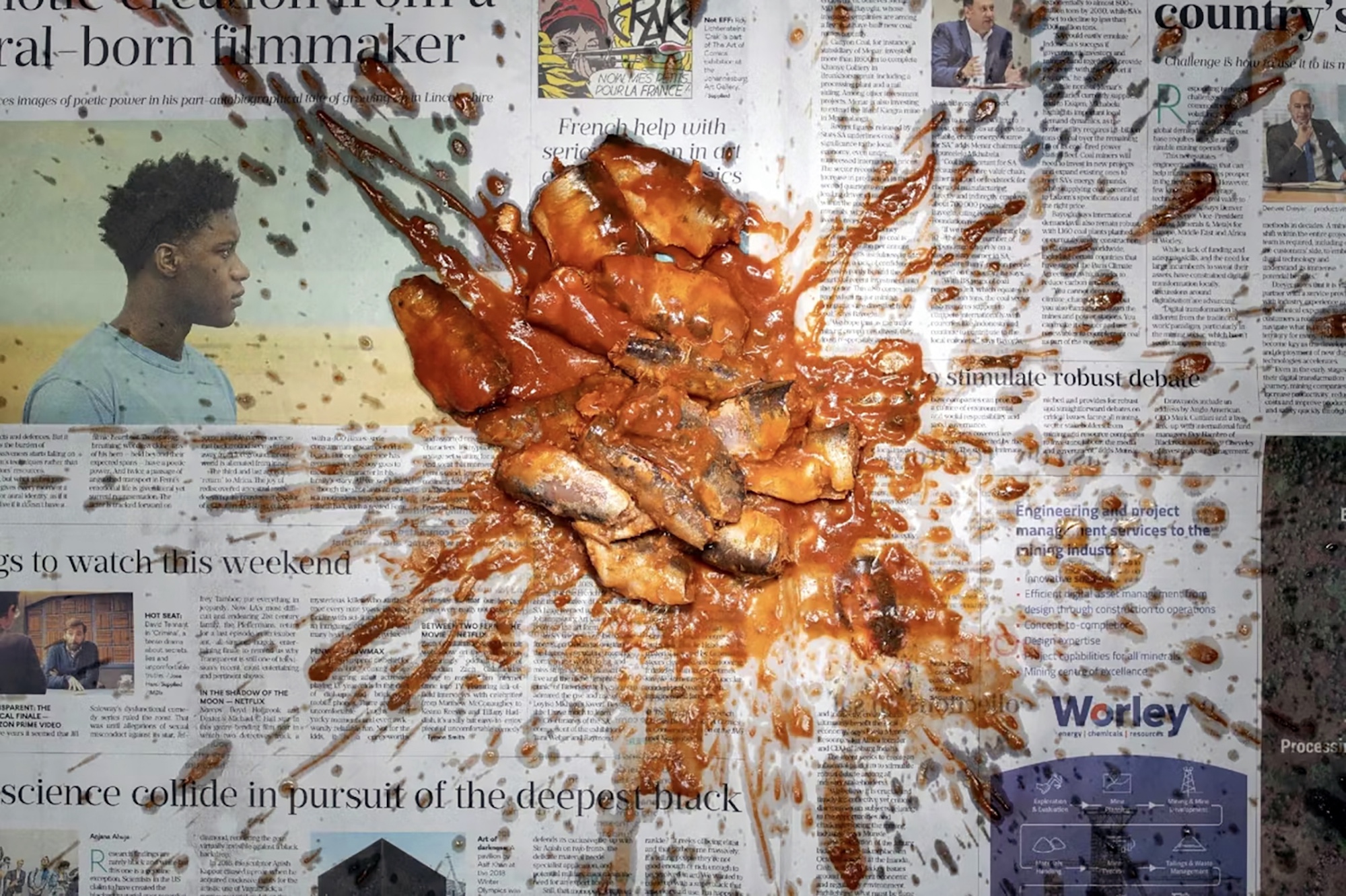
In 2019, a person living on the poverty line in Cape Town, South Africa had a daily food budget of ZAR 27 (USD 1.81), enough to buy two cans of sardines.
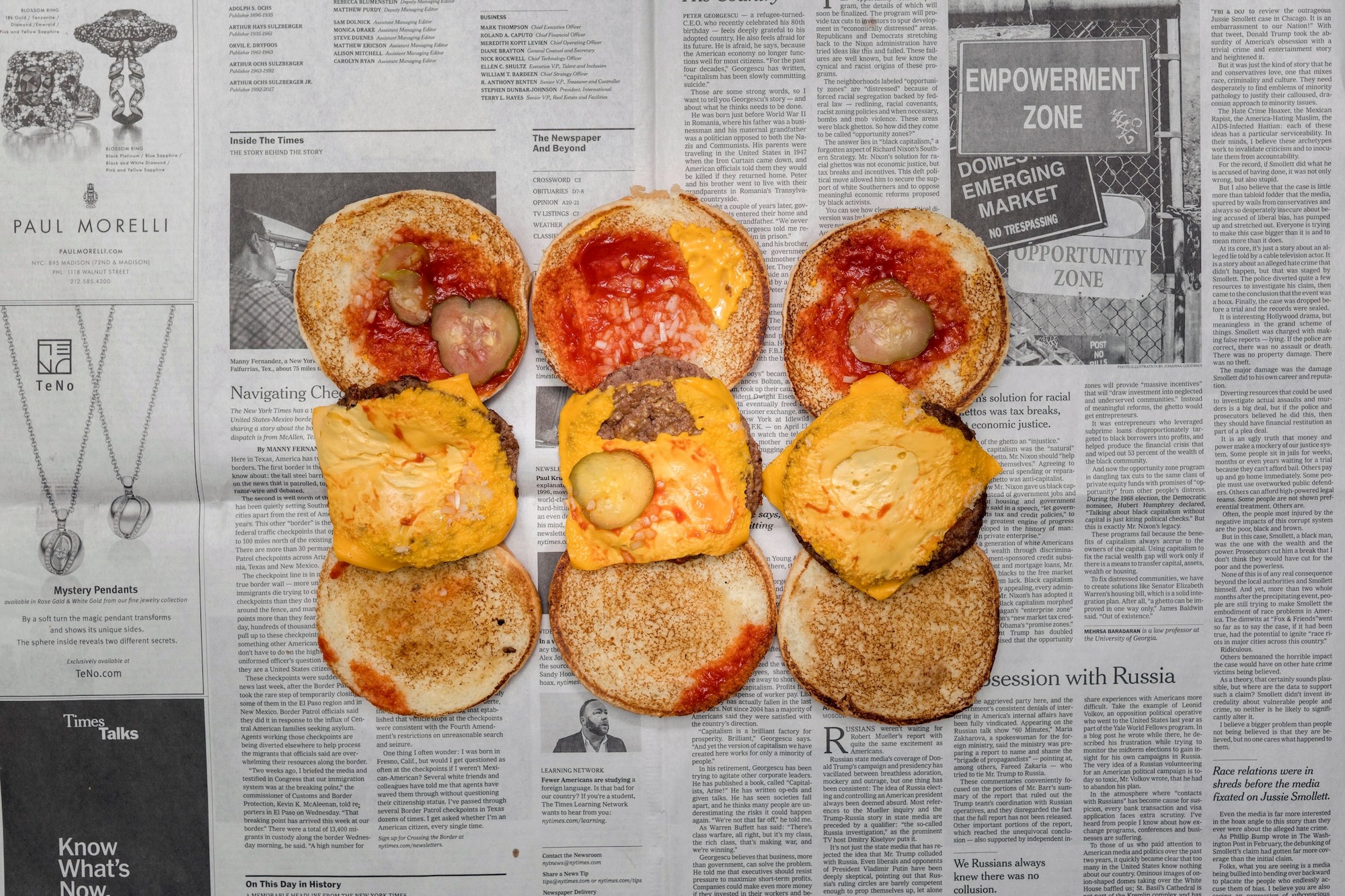
In 2019, a person living on the poverty line in New York, US had a daily food budget of USD 5.46, enough to buy three cheeseburgers.
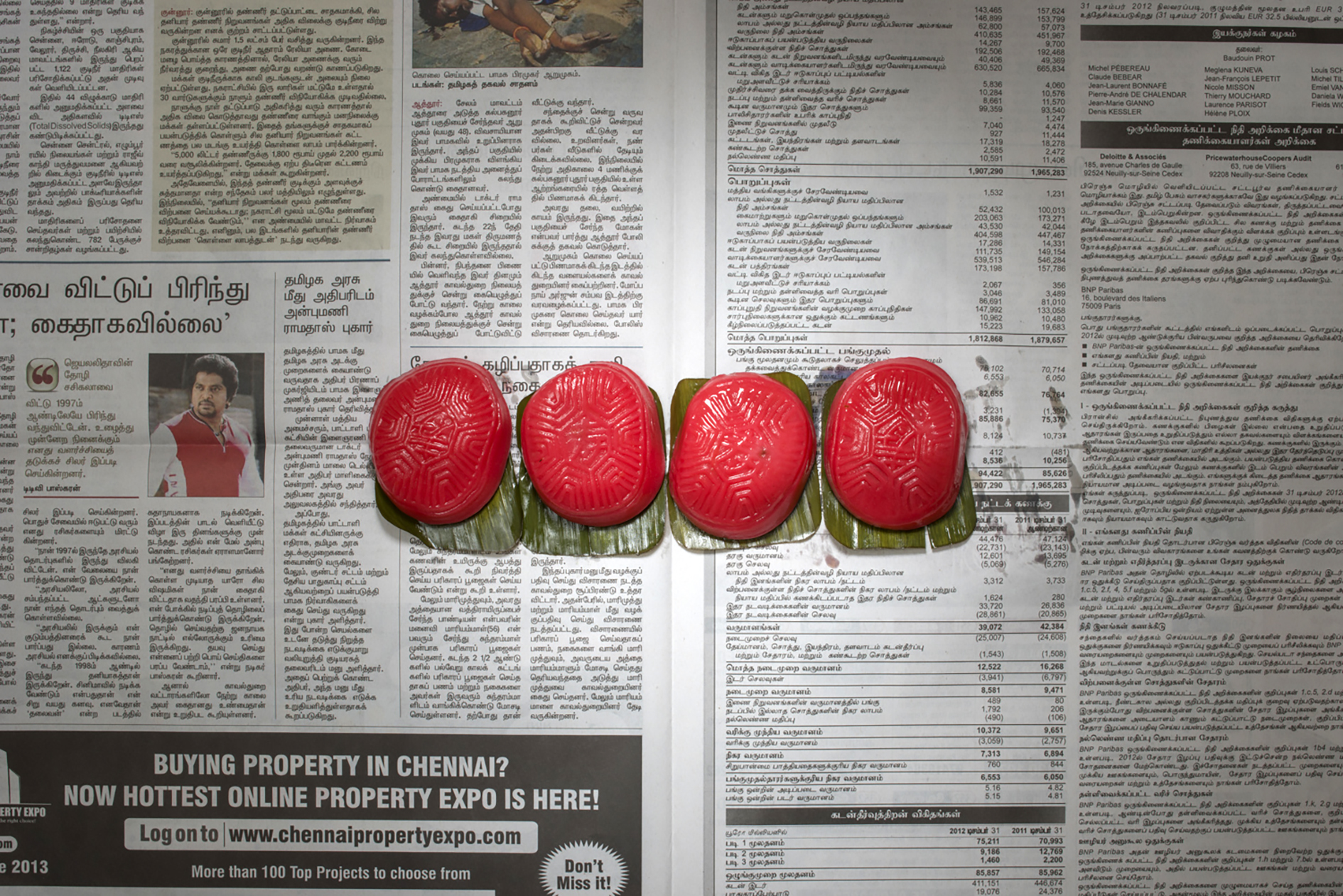
In 2013, a person living on the poverty line in Singapore had a daily food budget of SGD 2.22 (USD 1.79), enough to buy four kueh.

In 2019, a person living on the poverty line in Nairobi, Kenya had a daily food budget of KES 85 (USD 0.81), enough to buy three ears of corn.
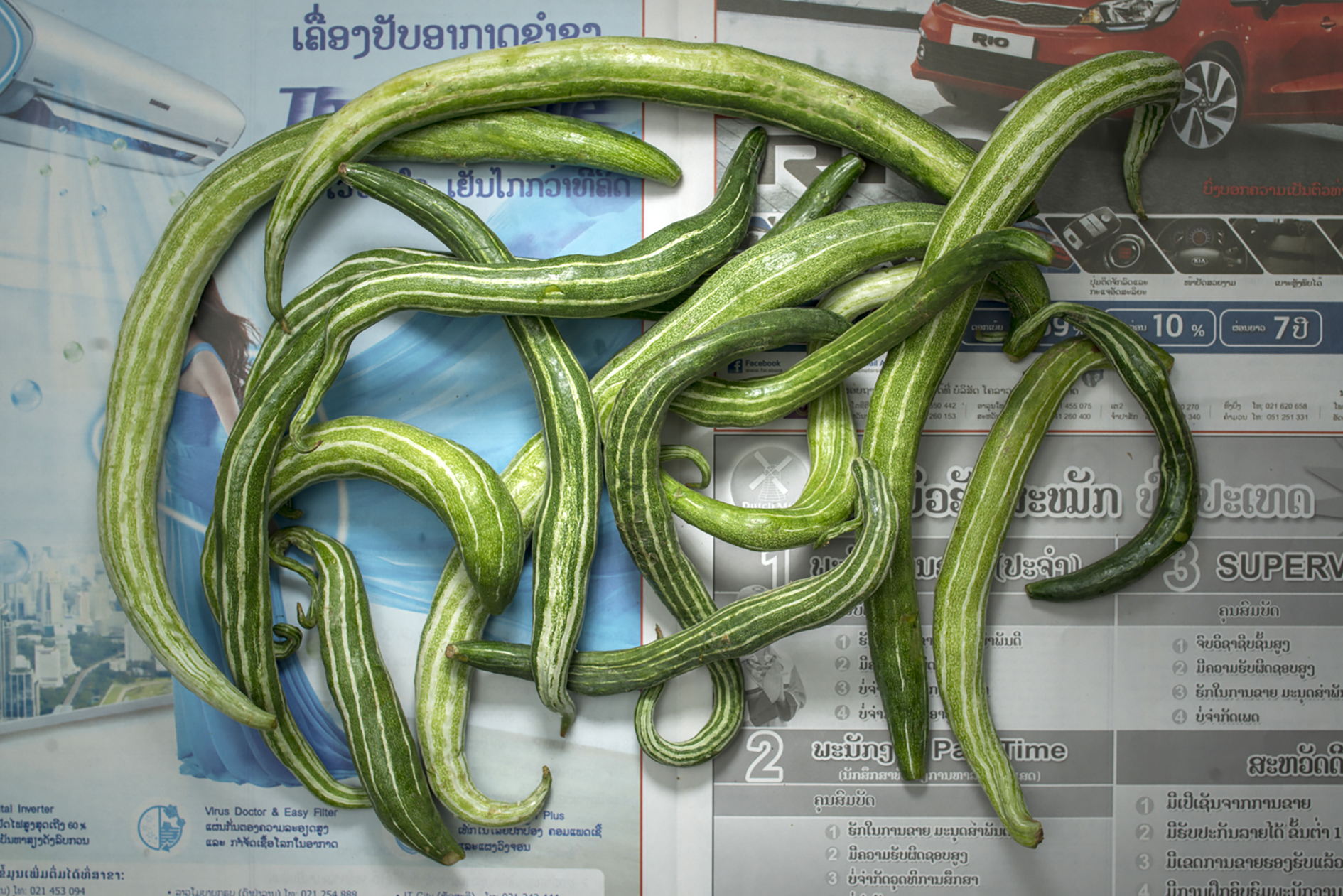
In 2015, a person living on the poverty line in Vientiane, Laos had a daily food budget of LAK 6,400 (USD 0.80), enough to buy a bunch of snake gourds.
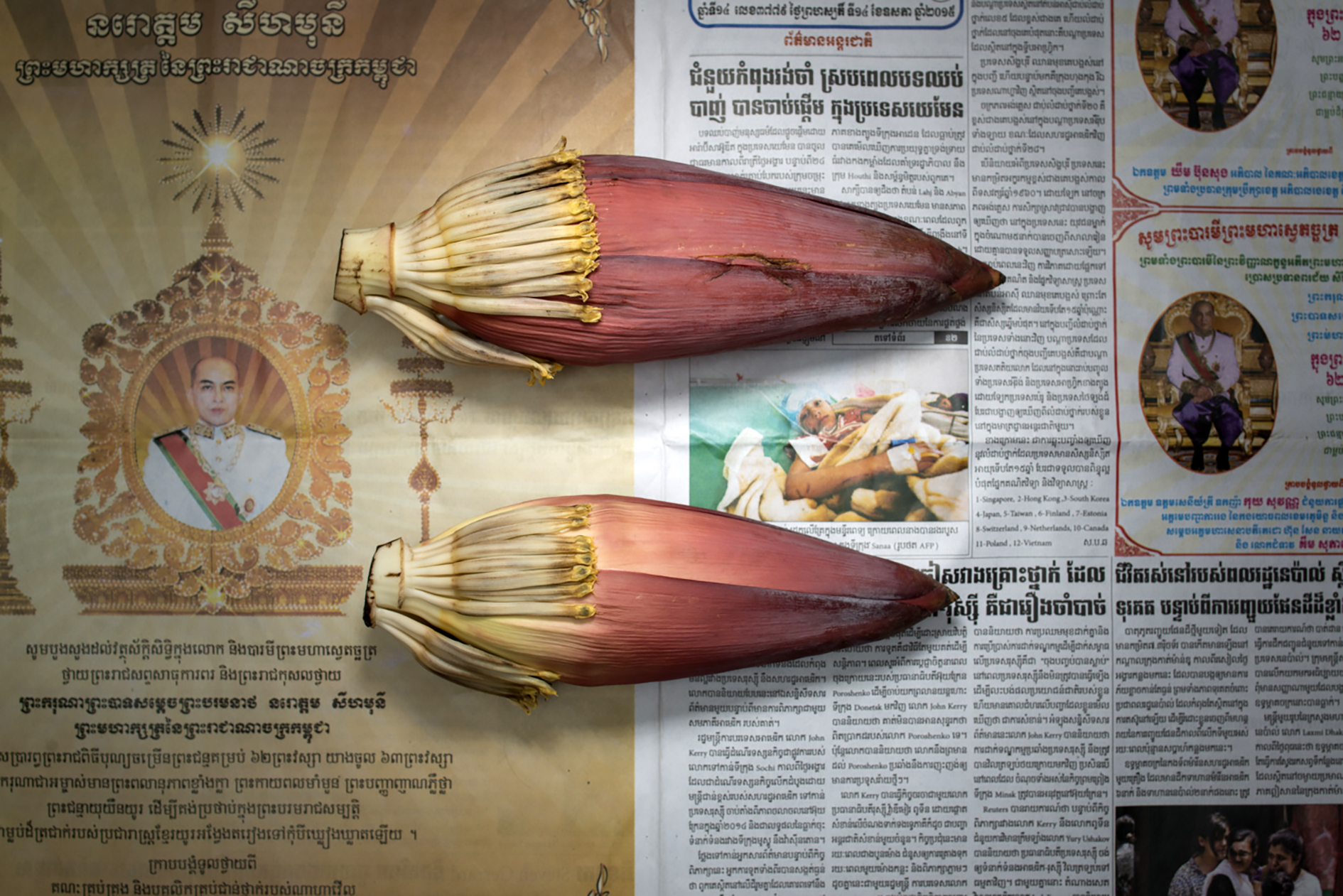
In 2015, a person living on the poverty line in Phnom Penh, Cambodia had a daily food budget of KHR 3,871 (USD 0.98), enough to buy two banana blossoms.

In 2011, a person living on the poverty line in Delhi, India had a daily food budget of INR 32 (USD 0.60), enough to buy six chicken feet pakoras.
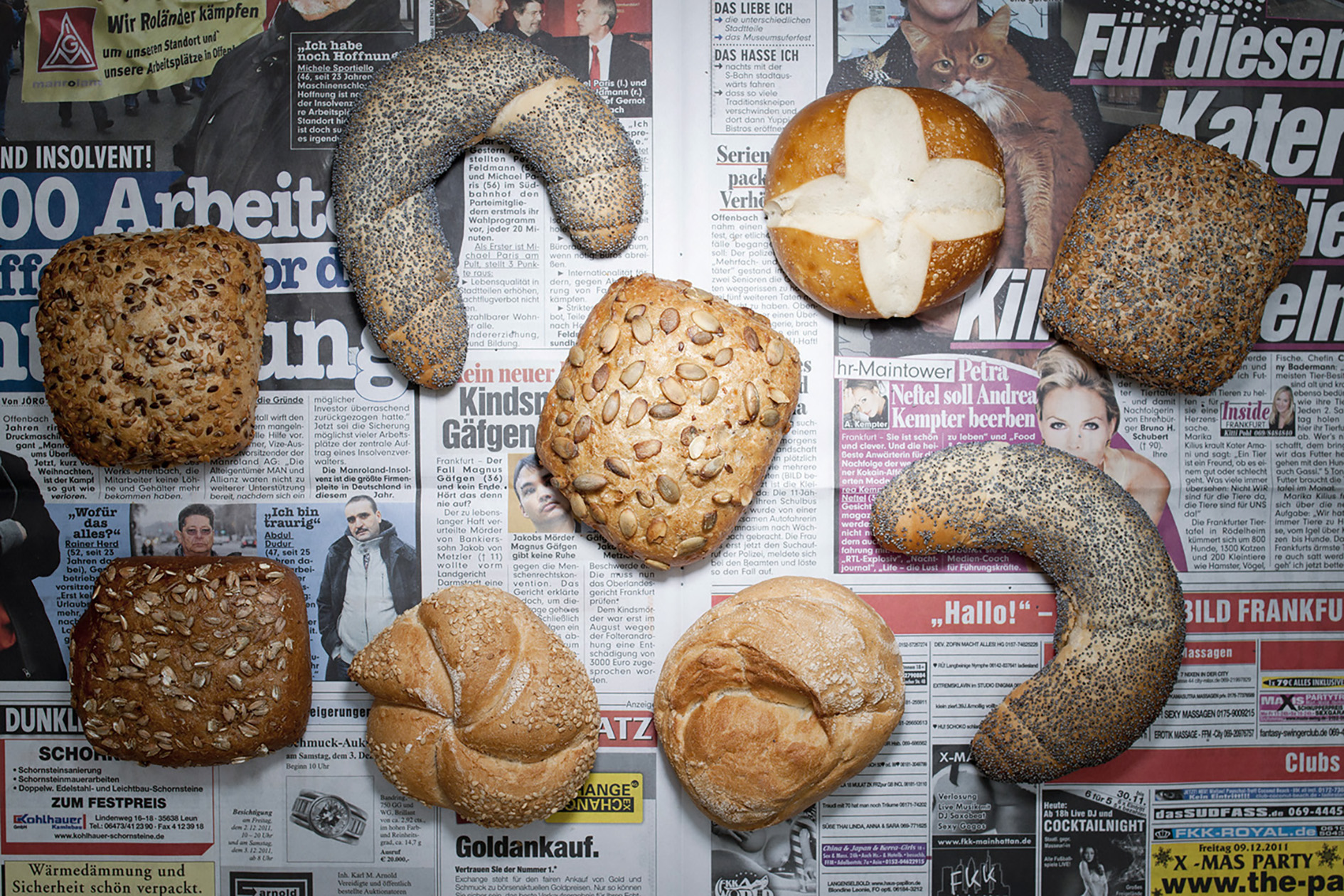
In 2011, a person living on the poverty line in Hamburg, Germany had a daily food budget of EUR 4.82 (USD 6.61), enough to buy a basket of bread.
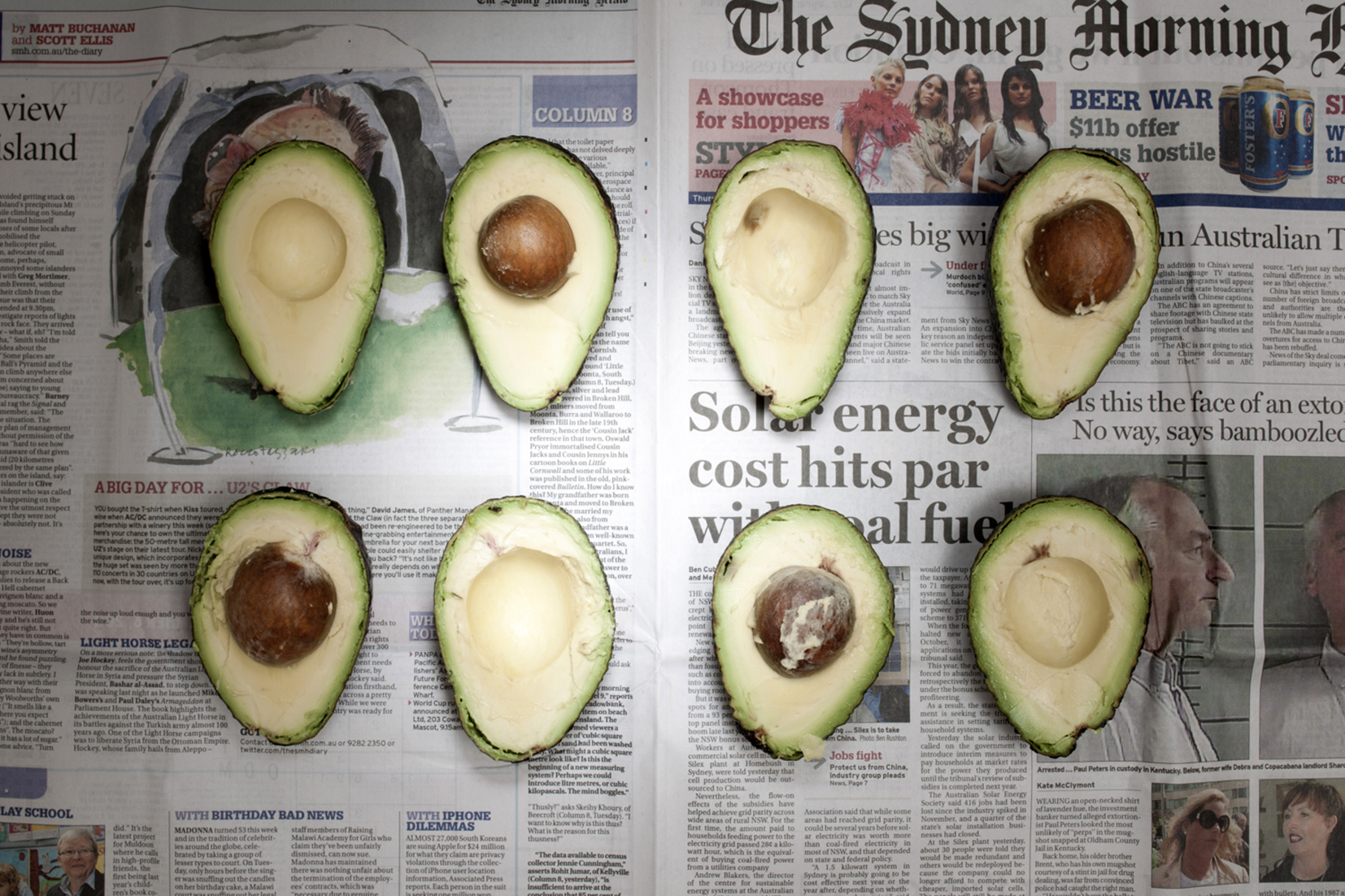
In 2011, a person living on the poverty line in Sydney, Australia had a daily food budget of AUD 7.52 (USD 8.02), enough to buy four avocados.
Installation view of The Poverty Line at “Capitalist Realism: The Loss of the Future,” Thessaloniki Photo Biennale 2018, Thessaloniki Museum of Photography, Greece.
Installation view of “Systems”, Collection Exhibition, The Museum of Modern Art (MoMA), Collection Gallery 216, New York, USA, Autumn 2023–Fall 2024.

FEBRUARY 2025 | ISSUE 13
MIND THE GAPS; BRIDGING THE GAPS
